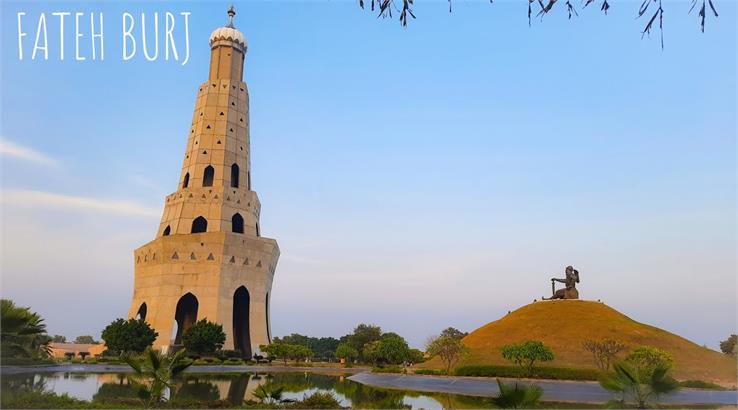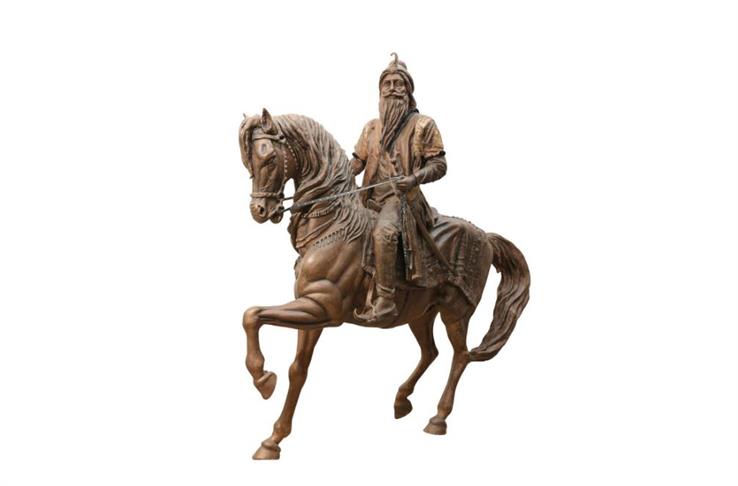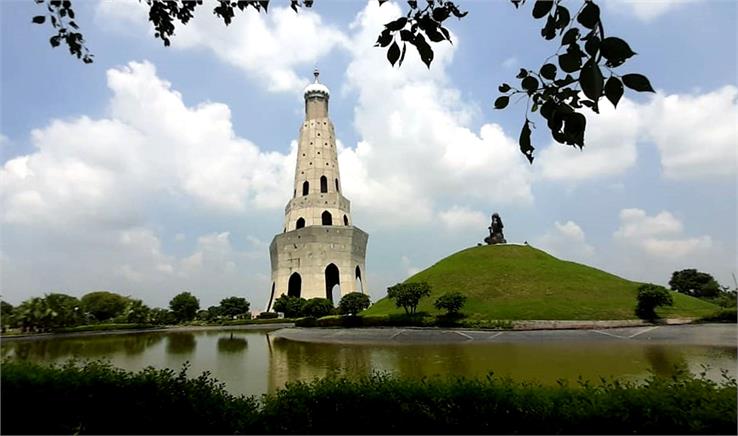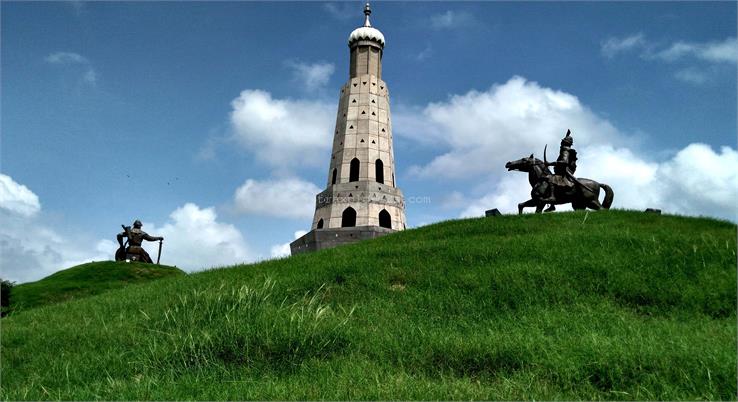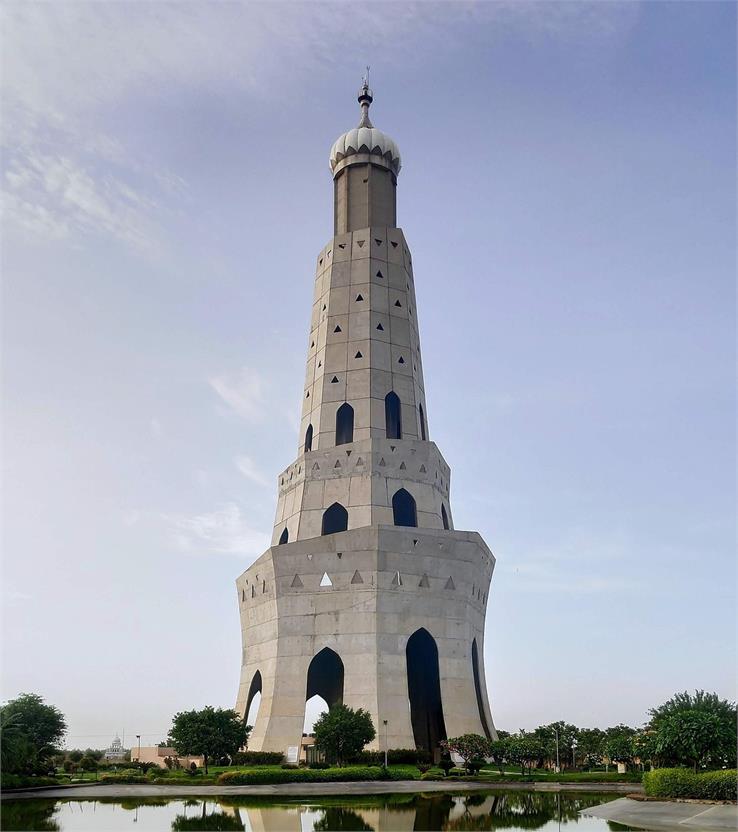Fateh Burj: A Towering Testament To Sikh History And Pride
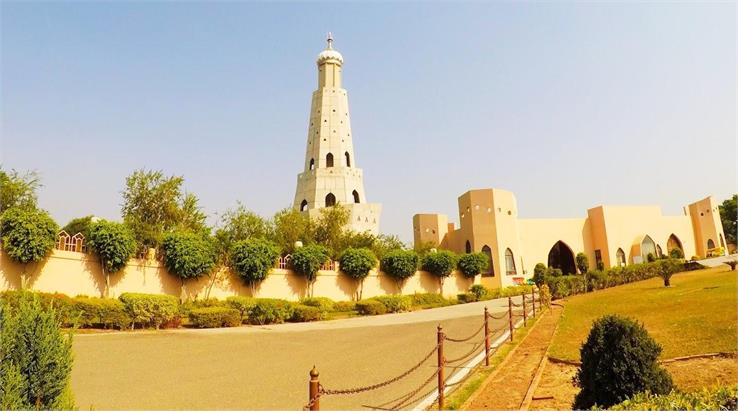
Location: Chappar Chiri, Sector 93, Sahibzada Ajit Singh Nagar, Punjab 140307
In the heart of Punjab, amidst the lush green fields and vibrant culture, stands a magnificent structure representing a significant historical event and a symbol of Sikh victory and pride. The Fateh Burj, the Victory Tower, is the tallest tower in India and a prominent tourist site in Mohali. It commemorates the valorous victory of the Sikh army led by Baba Banda Singh Bahadur over the oppressive Mughal forces in 1710. This remarkable triumph marked the first time in history that the Sikhs established their rule in Punjab. The Fateh Burj stands tall to honour the bravery and sacrifice of those who fought for freedom and justice.
Also Read: Chandigarh City With Rich History And A World Heritage Site
Who Was Baba Banda Singh Bahadur?
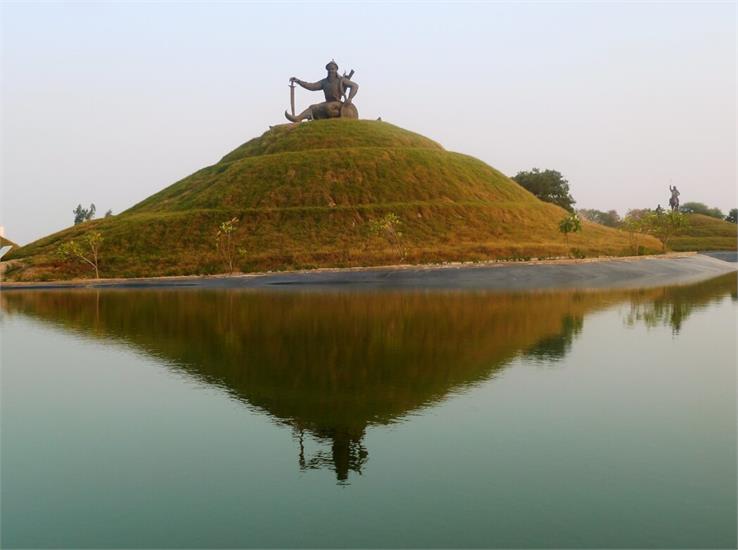
Baba Banda Singh Bahadur was a Sikh warrior and a commander of the Khalsa army who fought against the Mughal Empire in the early 18th century. He was born as Lachman Dev in 1670 in Rajouri, Jammu and Kashmir, in a Minhas Rajput family. He left home at 15 to become an ascetic and was named Madho Das Bairagi. He established a monastery at Nanded, on the bank of the river Godavari.
In 1708, he met Guru Gobind Singh, the tenth Sikh Guru, who accepted him as his disciple and gave him a new name, Banda Singh Bahadur. He also gave him five arrows as a blessing and a letter that commanded all Sikhs to join him. Banda Singh Bahadur then set out to Punjab to fight against the Mughal oppression and tyranny.
His first major action was sacking the Mughal provincial capital, Samana, in November 1709, where he killed about 10,000 Mughals and seized a large booty. He then conquered other towns and cities such as Sadhaura, Sirhind, Saharanpur, Banur and others. He established Sikh rule in part of Punjab and issued coins in the name of Guru Nanak and Guru Gobind Singh. He also abolished the Zamindari system and granted land rights to the peasants. Many Sikhs and some Hindu and Muslim groups supported him as the Mughals oppressed them.
However, his success alarmed the Mughal emperor Bahadur Shah, who sent a large army under Abdus Samad Khan to crush his rebellion. Banda Singh Bahadur and his men resisted the Mughal attacks for eight months at the fortress of Gurdas Nangal. They faced starvation, disease and constant bombardment. Finally, the Mughals captured them in December 1715 and transported them as prisoners to Delhi.
In Delhi, Banda Singh Bahadur and his men were tortured and humiliated. The captors offered them a pardon if they converted to Islam, but they defiantly refused. Every day, the captors publicly executed a few of them. The captors mercilessly killed Banda Singh Bahadur's son before his eyes. The captors subjected him to excruciating torture, using red-hot irons and tearing his flesh with pincers. He died on 9 June 1716 after enduring unimaginable pain for six months. He remained steadfast in his faith and courage till the end.
Baba Banda Singh Bahadur has revered as one of the greatest Sikh warriors and martyrs. He is known for his bravery, sacrifice and devotion to the Sikh cause. He challenged the mighty Mughal Empire and established Sikh sovereignty in Punjab. He laid the foundation of the Sikh Misls, which later formed the Sikh Confederacy and the Sikh Empire under Maharaja Ranjit Singh. He is an inspiration for all Sikhs and a symbol of Sikh pride and glory.
Inspiring Architechture of Fateh Burj
The Fateh Burj commands attention with its awe-inspiring architecture. Its magnificent design reflects the rich heritage of the Sikh community. The Burj features intricate carvings, traditional motifs, and ornamental work that exude a sense of regality and magnificence. The sheer scale of the structure is a testament to the grandeur of Sikh history. The tower stands at 328 feet (100 m) and has seven storeys. Each storey represents a major event in the life of Banda Singh Bahadur. The building also has a museum that showcases the history and culture of the Sikhs. A beautiful park with an artificial lake and fountains surround the tower. There are also statues of Banda Singh Bahadur and his four generals: Baj Singh, Ram Singh, Fateh Singh and Aali Singh.
Symbol of The Sikh Community
Beyond its architectural splendour, the Fateh Burj holds deep symbolism for the Sikh community. The word "Fateh" translates to "victory" in Punjabi, and the "Burj" is a constant reminder of the resilience and triumph of the Sikh people. It is a beacon of hope, inspiring generations to embrace their identity and persevere in adversity. The Fateh Burj has become an emblem of Sikh pride, attracting visitors from all walks of life who witness its magnificence and learn about the rich Sikh heritage. It serves as a cultural and educational hub, fostering a deeper understanding and appreciation for the contributions of the Sikh community to society. The Fateh Burj stands as a testament to the inclusive and diverse spirit of Sikhism.
Historical Significance of Fateh Burj
The Fateh Burj not only preserves the historical significance of the Sikh victory but also inspires future generations. Its towering presence serves as a reminder of the strength and resilience found within one's heritage. The Burj instils a sense of pride, encouraging individuals to embrace their roots, uphold their values, and strive for excellence.
How To Reach
There are different ways to reach Fateh Burj depending on your location and mode of transportation. Here are some of the options:
1. By Rail
The nearest railway station is Chandigarh, which is about 20 km away from Mohali. You can take a cab or a bus from Chandigarh to Mohali and then from Mohali to Chappar Chiri. The total travel time is about an hour.
2. By Road
You can also drive to Fateh Burj by taking the SH12A and NH205A roads from Chandigarh or Mohali. The distance is about 15 km, and the travel time is about 30 minutes. You can also take a bus from Chandigarh or Mohali to Chappar Chiri, which will take about 45 minutes.
3. By Air
The nearest airport is Chandigarh International Airport, which is about 25 km away from Mohali. You can take a cab or a bus from the airport to Mohali and then to Chappar Chiri. The total travel time is about an hour and a half.
Fateh Burj is open to the public from 10:00 am to 7:00 pm every day except Monday. The entry fee is Rs. 10 per person. You can also visit the nearby Khanda Museum, which showcases the history and culture of the Sikhs.
